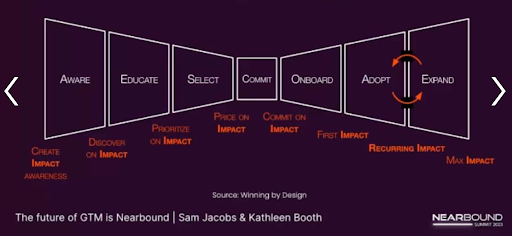Today’s Daily is inspired by NEARBOUND And The Rise of the Who Economy, launching LIVE on February 27th. Register here to get the book when it launches!
A time of unprecedented distrust
Trust is the greatest commodity of our era.
In a 2019 report, the Pew Research Center showed that social trust and interpersonal trust have been declining in the United States for decades. The report highlights that fewer Americans trust their fellow citizens, and trust in institutions like government and media has also eroded.
You might’ve read that and thought something similar to me…
“Okay, yeah, what’s new?”
We’ve been living in a society where distrust has been the norm for so long that we’ve become numb to people pointing out the obvious.
But the reason this is so important right now is that, for the first time, the effects of distrust are starting to creep their way into the ways we do business.
Widespread distrust is:
Changing the way buyers want to buy.
Thwarting outreach.
Diluting inbound messages.
Making the sales cycle longer, with more decision-makers needed for each purchase.
And complicating basic relationship-building.
This affects everyone.
From your customers to your partners to your executive board to your internal teams—partner pros, sellers, marketers, product folk, customer success folk, etc.
Why widespread distrust matters for partner pros
Despite the challenge that’s staring at every business dead in the face, there’s a great opportunity.
A world that doesn’t trust easily forces you to become better.
Now that trust is in such short supply, it has become increasingly valuable and prized which means the companies that meet customers where they are and with whom they already trust, will win.
This shift is rewriting the rules of customer engagement, and only a few have already figured that out.
Partner pros, should they choose to accept the challenge, are the heroes of the decade of the ecosystem.
You’re the ones who can help layer trust into every stage of the buyer’s journey.

The bowtie model of the customer’s journey.
You can help your GTM teams identify which partners have already built trust with key accounts, and then overlay partners into your company’s existing product, marketing, sales, and success strategies.
TrustRadius’ CEO on what buyers want
Perhaps the clearest signal of this new era is how we make purchasing decisions.
At the Nearbound Summit 2023, Vinay Bhagat, Founder and CEO of TrustRadius, one of the biggest review sites out there, shared that they’re seeing distrust impact business unlike ever before.
Buyers are more risk-averse.
Purchase decisions require more information.
Time to close is longer.
Each decision requires more decision-makers.
Scores, demos, or even base-line product, feature, and pricing information isn’t enough.
Vinay explained that
buyers care about efficiency
and social proof. They want to know
who
is reviewing products (are they relevant and credible), and
what
context they’re using the tools.
Today, the brands that embrace the strategy of meeting buyers where they are, giving them what they want, and aligning to their expectations will outperform in the longrun.
—Vinay Bhagat, Founder and CEO of TrustRadius
How to meet buyers where they’re at with nearbound
According to Ernst & Young, the number one reason companies invest in partnerships and platforms is because of the “proximity to and engagement with customers.”

In this new era of trust, ecosystems, and nearbound, the goal isn’t a transaction. It’s a relationship. It’s a lattice of interconnected relationships.
If you’re trying to run nearbound surround, Jay McBain recommends 3 concurrent projects:
Identify your TAM
(total addressable market), SAM
(serviceable available market), and SOM
(serviceable obtainable market)
Can you handle demand?Surround
Get to know your customer’s watering holes. Identify them. Live in them. Participate in them. Partner with them.Identify movers and shakers
Identify who, in each of these watering holes, is influential. Order their influence, and prioritize partnering with those people and companies.
Project one is foundational, but projects two and three are critical.
When you get into your customers’ watering holes, you’ll find tons of low-hanging fruit—influencers you know but aren’t partnering with, partnerships you haven’t fully optimized, and relationships you should but haven’t started developing.
Try out these three projects and let us know how it works!
Build trust by sharing valuable content
Every time you share something valuable and relevant with someone, you show them you know them. Share this Daily with someone who comes to mind!





